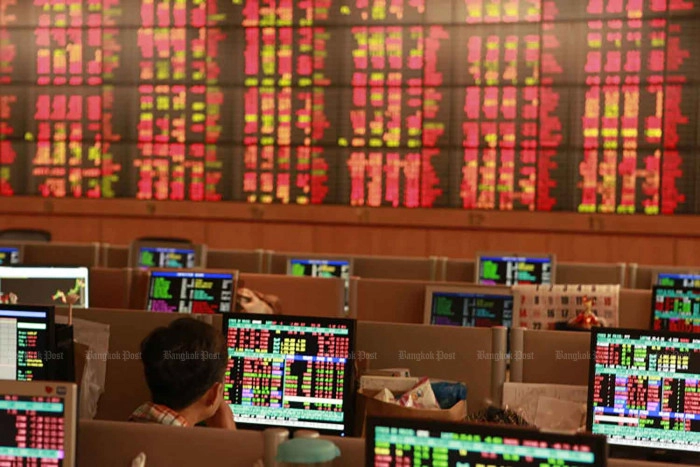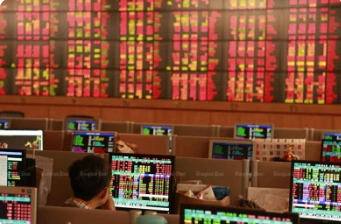Thailand’s prolonged economic slowdown is primarily driven by deep economic structural weaknesses within key sectors of the economy. Despite being one of Southeast Asia’s largest economies, Thailand has struggled to modernize its industries, improve productivity, and adapt to shifting global demands. Many of these economic structural issues have led to the current economic stagnation and growing investor uncertainty.
Understanding Thailand’s Economic Structural Issues: A Roadmap for Recovery and Future Growth
The Thai stock market has experienced a dramatic decline since the start of the year, falling more than 300 points or over 20%, placing it among the worst-performing markets globally. This downturn has raised serious concerns, highlighting the deep-rooted economic structural issues facing the country. While global factors such as trade wars and geopolitical tensions play a role, it is the internal weaknesses within Thailand’s economy that pose the most significant challenge. In this article, we will delve into the underlying causes of Thailand’s economic struggles, explore the impact of these structural issues, and discuss potential solutions to future-proof the economy.

The Downward Spiral of the Thai Stock Market: Impact of Economic Structural Issues
Thailand’s stock market, which serves as a key indicator of investor sentiment and economic health, has experienced significant turbulence in recent months. The sharp decline of over 20% in early 2025 is not merely due to short-term fluctuations or external shocks. Instead, it reflects the deeper economic structural issues that have been accumulating within the economy. These unresolved issues erode investor confidence and hinder the country’s ability to regain economic momentum.
External Factors: Global Trade and Geopolitical Uncertainty
While economic structural issues within Thailand are central to its economic struggles, external factors also play a role in the volatility of the stock market. Global trade wars, particularly those stemming from policies like “America First” under former US President Donald Trump, have had a significant impact on market sentiment. The resulting shifts in economic alignments and trade relationships have created uncertainty for many nations, including Thailand. As a small, open economy heavily reliant on exports, Thailand is especially vulnerable to changes in global trade dynamics.
These global factors, however, are beyond Thailand’s immediate control. Therefore, the country must turn inward to identify and address the economic structural issues contributing to its economic instability.
Internal Economic Weaknesses: A Deep Dive into Structural Issues
1. Manufacturing Sector Reliance on Legacy Industries
One of the most significant internal challenges facing Thailand is the over-reliance on traditional manufacturing industries, such as automotive and extractive industries. While these sectors have historically been drivers of economic growth, they are no longer as competitive as they once were. The country’s manufacturing base remains dependent on its past successes, which are increasingly outdated in the face of new, high-tech industries and innovation-driven sectors that are gaining prominence globally.
The government has made efforts to develop innovation-driven industries and promote S-curve sectors (such as robotics, digital technology, and clean energy), but progress has been slow. These sectors have yet to materialize as substantial contributors to the economy, and Thailand remains caught in the middle of its old and new economic models.
2. Investment Climate and Regulatory Challenges
Another key aspect of Thailand’s economic structural issues is the lack of transparency and inefficiency in the regulatory environment. Several high-profile corporate governance scandals, such as instances of capital mismanagement and embezzlement in listed companies, have raised questions about the effectiveness of Thailand’s financial oversight and corporate accountability.
Despite these incidents, the regulatory responses have often been slow and inadequate. Investors and business leaders in Thailand are increasingly concerned about the reliability of the country’s legal and financial frameworks, which only exacerbates investor uncertainty. If the government fails to address these regulatory shortcomings, it will be difficult for Thailand to attract the foreign direct investment needed to boost economic growth.
3. Slow GDP Growth and Rising Household Debt
Thailand’s GDP growth has consistently lagged behind its ASEAN neighbors, which is a clear indication of the structural problems within the economy. Factors such as stagnant wages, a lack of investment in human capital, and insufficient productivity growth have all contributed to this slowdown.
Additionally, rising household debt levels are placing further strain on the Thai economy. As consumer debt continues to grow, households are becoming more financially constrained, which reduces overall consumption and further dampens economic activity. The government’s inability to address these issues has led to a sense of economic stagnation that is deeply affecting investor confidence and the general economic outlook.
4. Aging Population and Declining Workforce Quality
Thailand faces another pressing demographic challenge—its aging population. As the number of elderly citizens rises and the working-age population shrinks, the country’s labor force will experience a decline in both quantity and quality. The workforce is becoming older, and the youth entering the job market lacks the necessary skills to drive innovation and productivity growth.
The country’s education system also faces significant challenges, which further exacerbate the decline in workforce quality. Without significant reforms to improve education and skill development, Thailand risks losing its competitive edge in the global economy. This long-term issue must be addressed if the country hopes to remain relevant in the coming decades.
The Government’s Response: Short-Term Measures and Long-Term Vision Amidst Economic Structural Challenges
In response to the country’s economic challenges, the Thai government has introduced several short-term measures aimed at stimulating the economy. These include initiatives such as the 10,000-baht digital wallet handout for 45 million citizens. However, delays in implementation and unclear economic benefits have raised concerns about the effectiveness of these policies in addressing the economic structural weaknesses.
Other measures, such as the creation of the Vayupak Fund to support stock prices, have failed to provide sustainable stability in the market. While the stock index briefly responded to these interventions, it quickly retreated, emphasizing the persistent economic structural issues that continue to hinder the economy’s growth.
Monetary policy interventions, including interest rate cuts by the Bank of Thailand, have also produced limited results. While lower interest rates might reduce financial costs and make borrowing cheaper, they have not been enough to restore investor confidence or generate significant economic structural growth.
The Path Forward: Fostering Innovation and Structural Reforms
To reverse the current economic decline and ensure long-term prosperity, Thailand must adopt a vision that directly addresses its economic structural weaknesses. Short-term fixes and temporary solutions will not suffice against deep-rooted challenges. Instead, the government must focus on fostering innovation-driven industries, improving regulatory frameworks, and executing substantial economic structural reforms.
1. Promoting Innovation-Driven Industries
Thailand must prioritize the development of economic structural industries that focus on technology, innovation, and sustainability. By investing in S-curve sectors like robotics, clean energy, and digital technology, Thailand can diversify its economic foundation and reduce reliance on outdated industries. Encouraging a culture of innovation through incentives, research and development, and entrepreneurship will be vital to securing the country’s economic future.
2. Improving Regulatory Transparency and Corporate Governance
Reforming the regulatory environment to ensure greater transparency and accountability is crucial for rebuilding investor trust and addressing economic structural issues. Stronger enforcement of corporate governance standards and faster responses to corporate scandals will help restore confidence in Thailand’s financial markets. Regulatory bodies must also collaborate more closely with businesses and international investors to establish a more stable and predictable business environment.
3. Investing in Human Capital and Education
To address the decline in workforce quality, Thailand must invest in its education system to equip the next generation with the skills needed for the rapidly changing job market. This includes not just academic knowledge but also practical, technical, and digital skills. Additionally, policies promoting lifelong learning and upskilling for the existing workforce will be crucial in addressing economic structural challenges and maintaining economic competitiveness.
Conclusion: Overcoming Economic Structural Weaknesses for Long-Term Growth
See more articles
Royal Casino: คู่มือสุดพิเศษสำหรับการพนันออนไลน์
Casino Games: คู่มือครบวงจรเกี่ยวกับการพนันออนไลน์
Sports Bet: คู่มือพื้นฐานและรายละเอียด













